In just a month, it will be time to send my daughter off to school which means it will be time for me to start packing lunches again. For most of junior kindergarten, I brought my daughter home for lunch partially because she has asthma and had to take her puffers at lunch and partially because she was a very slow eater and I was scared she would not eat at school. Towards the end of the year, once her asthma was under control, I let my daughter stay for lunch and to my surprise she actually did a wonderful job of eating her lunch. This year I hope to let my daughter stay at school so that she can enjoy having lunch with her friends. This means I will be packing a lot more lunches and therefore writing up more healthy lunch idea and recipe posts!
Here are some tips for packing healthy & eco-friendly lunches:
- When packing lunches, keep in mind that foods between the temperatures of 4 degrees Celsius and 60 degrees Celsius are best eaten within three hours of packing to avoid spoilage.
- Pack cold foods such as sandwiches, salad, and yogurt with an ice pack to ensure that they stay cold and fresh.
- Pack warm foods in an insulated food jar to keep it warm. The Thermos FUNtainer food jar keeps hot food hot for up to 5 hours and cold foods cold for up to 7 hours.
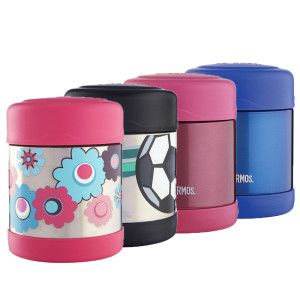
- When packing in a thermos, make sure to heat the food until boiling temperature to ensure that the food stays warm and safe to eat. It is also best to pre-heat your thermos container with boiling water before adding the boiling hot food.
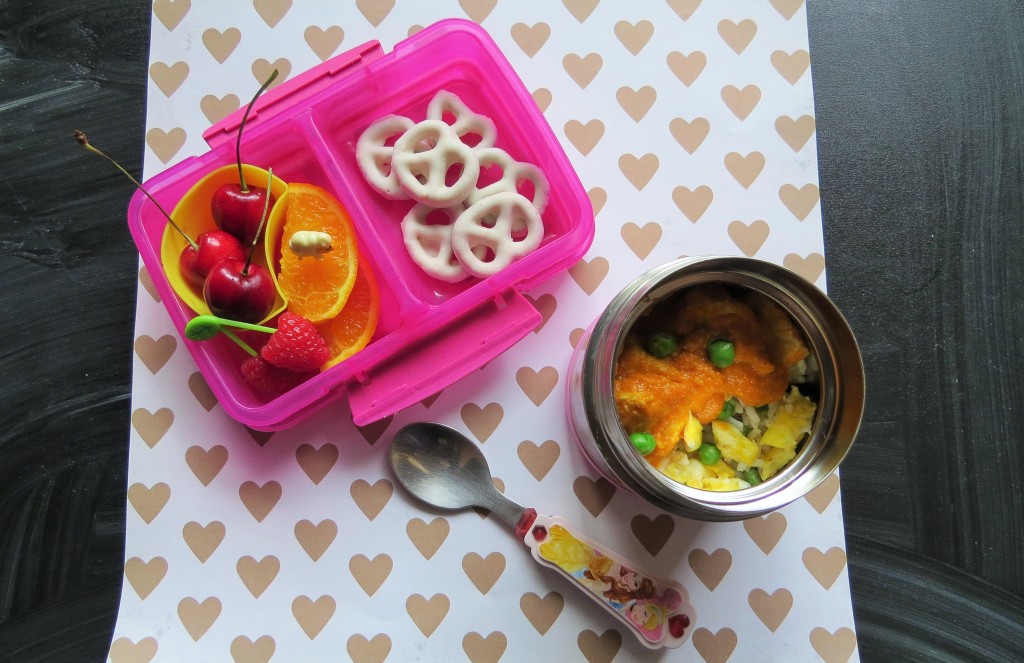
- Include at least three of the four food groups (grain, veggie/fruit, dairy, and meat/alternatives) to ensure a balanced diet. The 6-compartment YUMBOX helps you prepare a lunch which includes all the food groups.
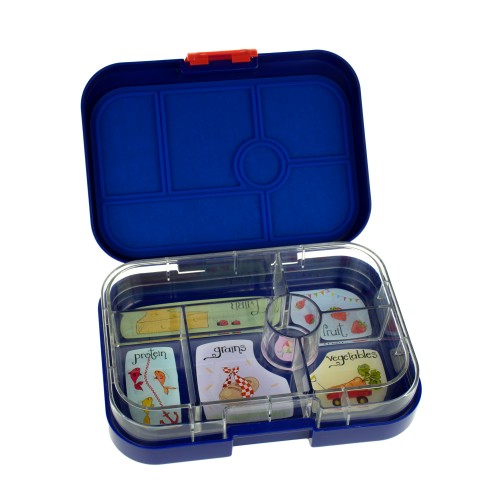
- Pack a fresh smoothie (in a flask) for a child that doesn’t like eating their veggies and fruits.
- Follow the general rule: the more colourful your meal, the more healthier it is!
- Kebabs are a fun kid-friendly lunch and also great way to get in items from all the four food groups. Use paper straws or lollipop sticks instead of sharp skewers for kids.
- Pack a lunch with plenty of protein (boiled egg, ham, chicken, beans, etc.) and healthy carbohydrates to ensure your child remains full and has plenty of energy to get through the rest of the school day.
- Leftovers make great lunches. For example, leftover tandoori chicken or roasted chicken can be incorporated into a wrap with lots of fresh veggies.
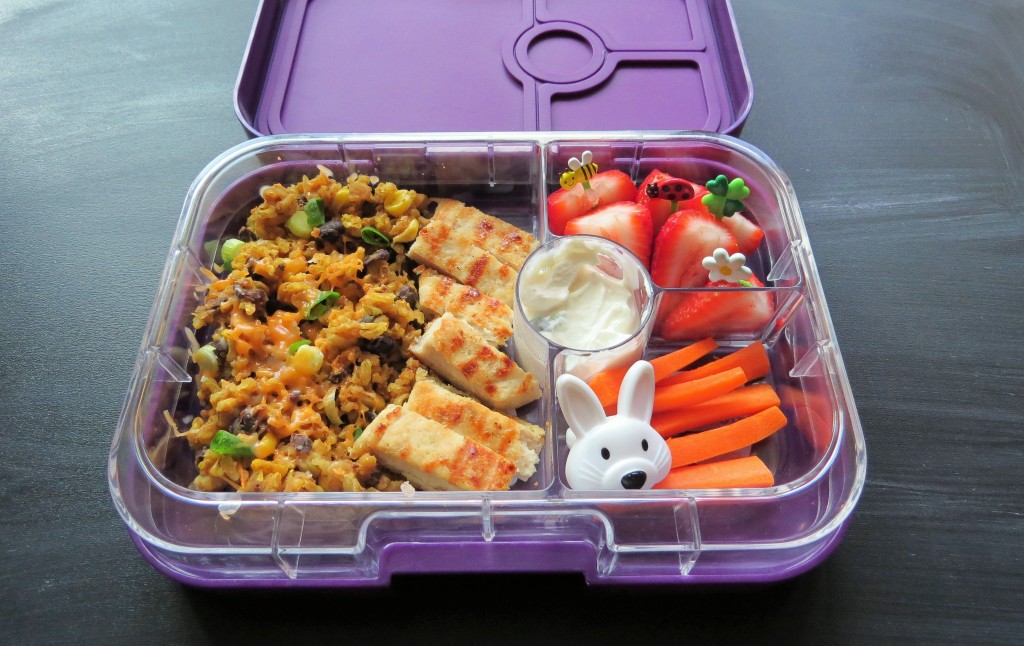
- Choose whole-grain breads and lean meats such as turkey and chicken breast for sandwiches.
- Avoid pre-packaged, highly processed foods such as chips, cookies, Lunchables, etc. Not only do processed foods lack nutrition, but they are also high in sodium, sugar, and unhealthy fats.
- Have some easy-to-make lunches ready, such as homemade meatballs or chicken nuggets in the freezer, for days when there are no leftovers.
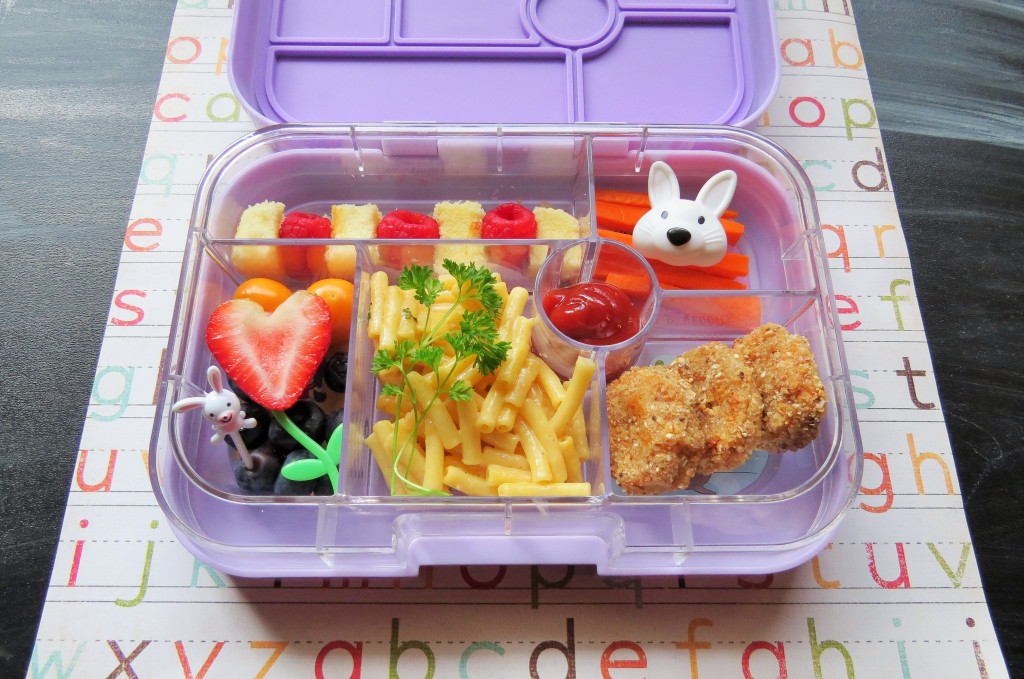
- If you want to pack your child a treat, consider packing chocolate covered raisins, yogurt-covered pretzels, a homemade mini-muffin, homemade chocolate pudding, or homemade granola, instead of candy to prevent sugar spikes.
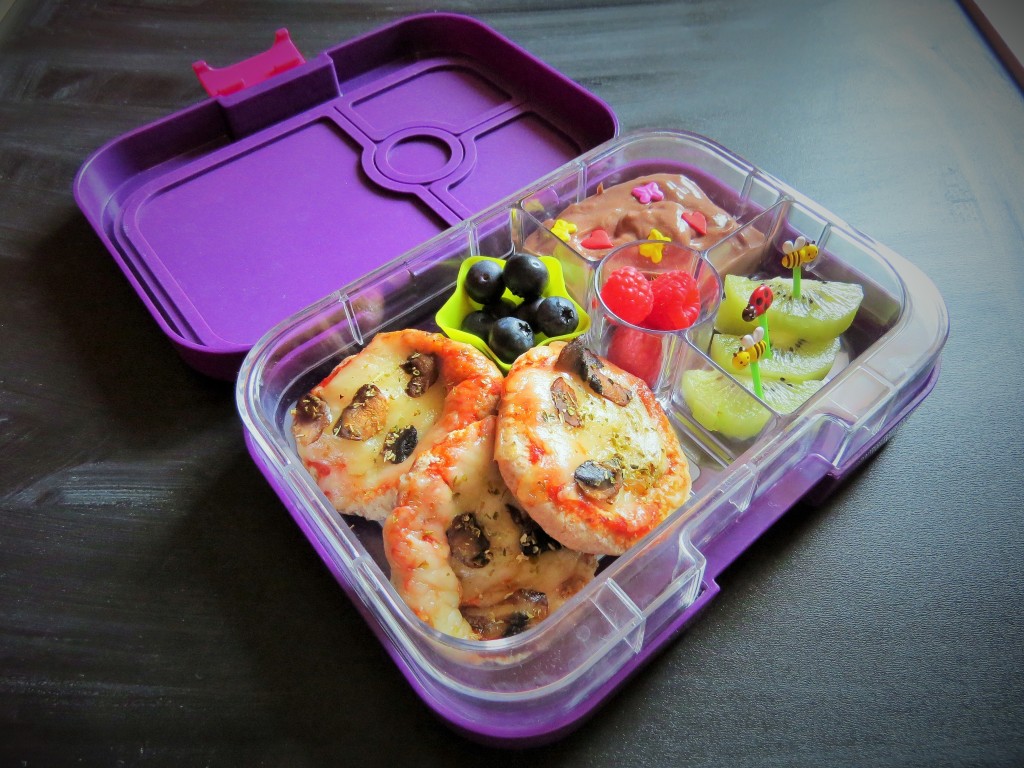
- Take into consideration the nut-free policy at your child’s school and DO NOT pack anything with nuts in it (including Nutella).
- Be creative, especially if you have a picky-eater on your hands. Cut sandwiches into fun shapes or arrange food in a interesting way. You can even add a sticker or a special note in your child’s lunch tote.
- Pack a variety of foods you know your child WILL eat. Finger foods or a bunch of different snacks covering all the main food groups are great for kindergarteners.
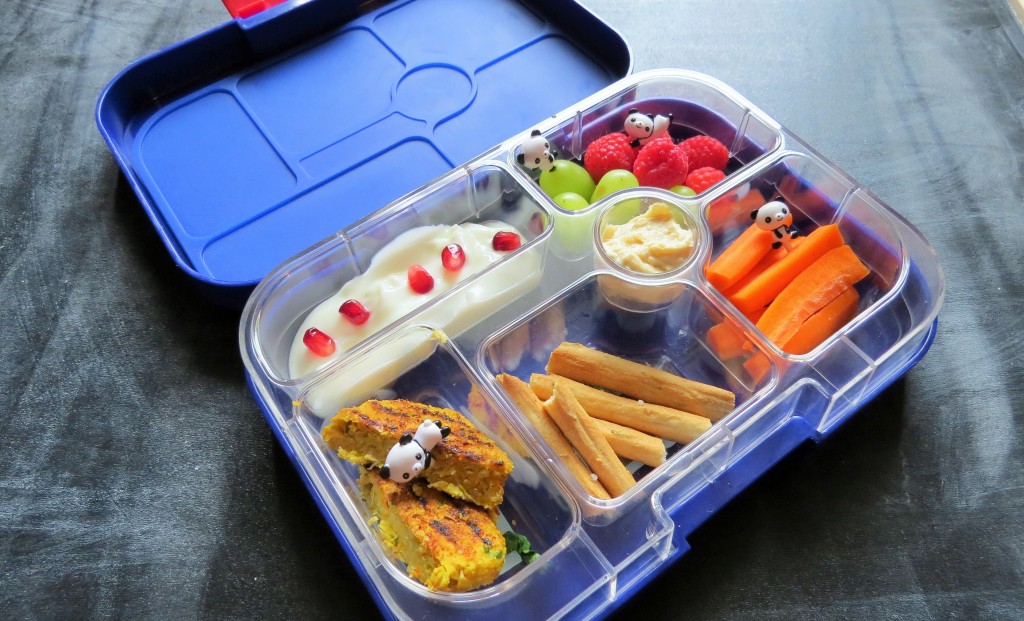
- Plan your child’s lunch the day before to make you have everything you need and to save time.
- Buy fruits and vegetables that are in season to keep food costs low.
- Use lunchboxes, lunch containers, food jars, and flasks, instead of Ziploc bags, cling wrap, and aluminum foil, to reduce waste and to save you money.
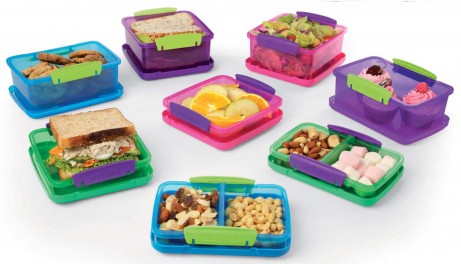
- Consider packing any utensils in reusable snack bags instead of sandwich bags. Colibri has a great line of reusable snack and utensil bags.
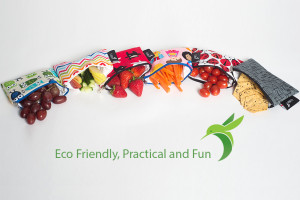
- Warm and hearty foods such as pastas, soups, stews, pizza bagels, bean burritos, chicken fajitas, naan with curry, and rice dishes with steamed veggies make great winter lunches.
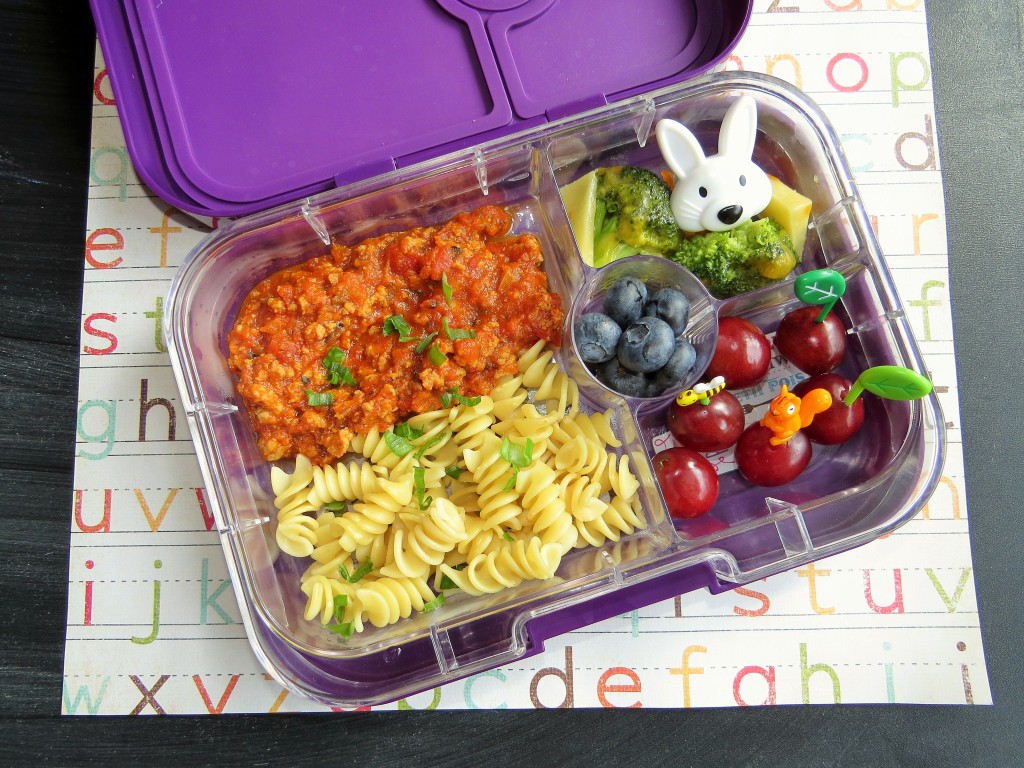
- Fresh fruits, veggies with dip, salads, wraps, sandwiches, and yogurt are perfect choices for summer lunches.
- Allow your child to help plan and pack his or her lunch. Usually children tend to eat what they have helped prepare.
- Add a small bottle of handsantizer or antibacterial wipes to your child’s lunch tote to make sure he or she is using clean hands to eat.
What your child eats is an important factor in determining your child’s mood, ability to concentrate and focus, and learn in school. Choosing to pack a healthy, home-made, wholesome lunch ensures not only improved learning but also good health and immunity.
NOTE:
- When buying containers, look for sealed lids to prevent leaks and easy to open lids or latches. My favourite children’s lunchbox has got to be the Yumbox because I can pack a variety of things in just one container. The Yumbox is leak-proof and seals each compartment separately so that there aren’t any leaks within or outside the lunchbox. Two other containers I often use are Sistema snack containers and Lock and Lid Containers. Sistema containers are bright, cheery,easy to open, and affordable. My children love them!
- If you are looking for a highly functional, easy to clean lunch bag with lots of room, I recommend the So Young brand. This lunch bag is made of EVA coated linen and comes with a removable insert for easy cleaning as well as an extra back pocket to store utensils. The best part is that it is PVC, Phthalate, Lead and BPA Free. Check out the whole collection of lunch bags and ice packs HERE.
- By choosing to buy organic, you are eliminating pesticide residue that would otherwise be a part of your child’s meal. Even though the FDA says that the amount consumed is negligible, studies have shown even those amounts can have a negative affect on a child and are toxic to the nervous system. If your budget is tight and you cannot afford an all organic diet, here are the 12 or so produce items, as suggested by the Environmental Working Group for 2015, that you should consider always buying organic: apples, peaches, nectarines, strawberries, grapes, celery, spinach and other leafy greens, sweet bell peppers, cucumbers, cherry tomatoes, imported snap peas and potatoes. CLICK HERE to learn more about the EWG and pesticide use in produce.
Feature Image: multiculturalfamilia.com

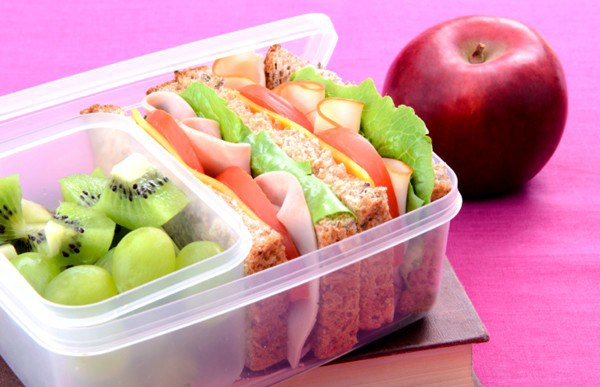
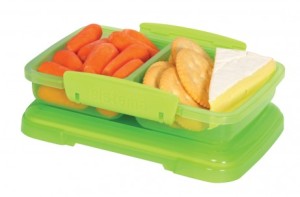
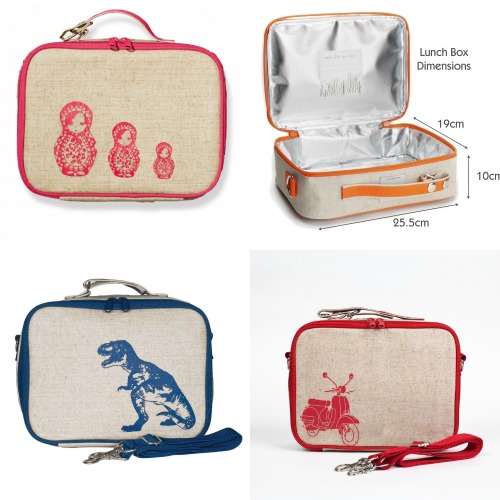
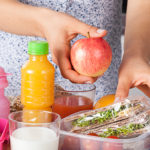
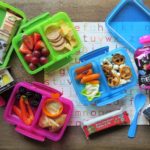
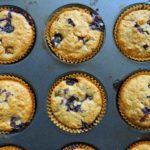
[…] 25 Tips for Packing School Lunches […]
Hi ,
Would like to know how do you pack pizza or flatbread or Naan in kids lunch boxes to stay warm during colder months ? . I have thermos and planetbox . Any tips would be greatly appreciated. And would like to know pizza or easy sandwich ideas for kids lunch boxes. Thanks in advance . Recently came to know about your blog through Planetbox facebook page .Totally loved it .